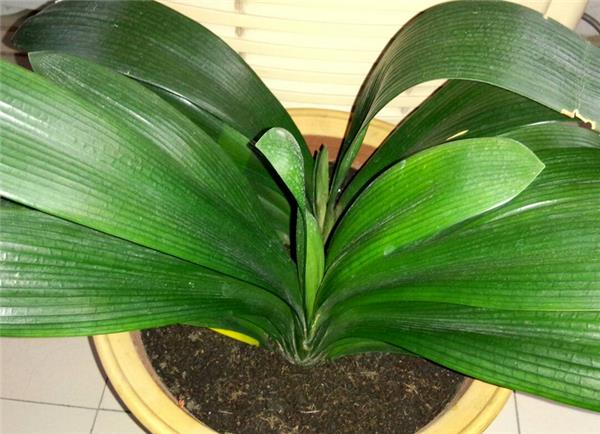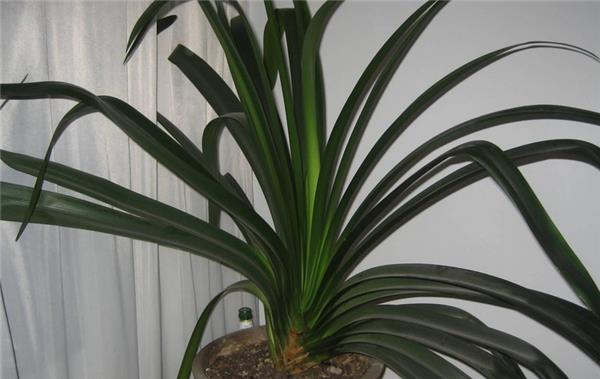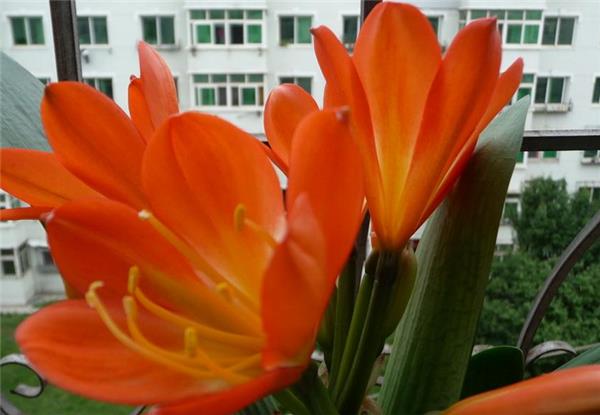The expert teaches you what to do with the rotten roots of Magnolia.
Gentleman orchid is the heart of many scholars, of course, there are many people like, then, how to raise the gentleman orchid can be better, there is a gentleman orchid rotten root phenomenon should do?

First, what about the rotten roots of Cymbidium
When the orchid is in the ramet, the wound is not disinfected and infected by bacteria, or too much watering in the cultivation process, poor soil permeability, excessive fertilization, application of immature raw fertilizer and so on are the common causes of rotten roots. If the root of a large adult orchid is rotten, it will show that a certain leaf is dry-pointed, blackened, scorched and shedding. Find out the cause, add to overcome, and stop the continued occurrence of rotten roots.
When the root is much rotten, most of the leaves fall off, leaving only the central ligule. When it is serious, the plant is unstable, gently touch it with your hand, and shake it. When you take off the basin at this time, you can see that some of its fleshy roots are completely rotten, and some are half rotten. The rotten root leaves only a withered membranous skin, which is soft and rotten no matter how long it takes. When you find this situation, you should shake off all the soil and rinse the roots with clean water. Carefully remove the rotten roots and cut off the rotten parts with clean scissors. Then soak the root in 0.1% potassium permanganate solution for disinfection, put forward the root after 5 minutes, rinse with clean water to remove the disinfectant, dip in a small amount of sulfur powder or plant ash, put it indoors to dry the surface and then plant it in a pot again. When going up the pot, you should plant it shallowly, bury the stem plate, and the false bulb should be exposed to the soil, which is beneficial to the root. After watering once, keep it in a semi-shaded place. In the future, spray or add plastic film cover, try to make the air humidity higher, less watering. When the temperature was maintained at about 20 ℃, the growth of lobule was seen. At this time, the new root has been issued and can be transferred to normal water and fertilizer management.

Young plants, the roots are rarely very delicate, such as rotten roots, soon all the roots will rot, the leaves are drooping. When these conditions occur, the plant should be removed from the pot in time, and the residue on the unrotten stem plate should be cleaned, washed, disinfected, and dried on the surface, and then inserted into the plain sandy soil according to the method of cutting. Under the environmental condition of 20 Mel 25 ℃, shade, keep high air humidity and moist soil, let it send out new roots, wait for the leaves to recover, and put them back into the pot with rotten leaf soil in time.
II. Matters needing attention in the cultivation of Cymbidium
1. Prevent direct sunlight and do not expose yourself to the sun
The magnolia in summer should cover the strong light all day. Using the oblique light of the sun for a while every morning is enough to satisfy photosynthesis.
2. Prevent high temperature, do not dry
The summer temperature of gentleman orchid is 18 ℃-25 ℃, it is best to put it in an air-conditioned room, or in a balcony shaded and ventilated place. When watering, it is best to use tap water that has been insolated for two or three days, and water once after 6 o'clock every afternoon, do not make the basin soil too dry or too wet.
3. Prevent apprentices from growing, do not apply fertilizer
Summer is the dormant period of Magnolia, stop fertilization, moderate watering, humidity control is an effective measure. If the pot soil is overfertilized or the fertilizer effect is large, the soil in the upper part of the flowerpot should be poured out and mixed with the sand of 1, 3, 2, 2 and 3, which can not only reduce the fertilizer effect, but also play a cooling role.
4. Prevent dust pollution and do not pour dirty water

The leaves of Cymbidium should be kept clean, dipped in water with fine gauze every week, wrung out and gently dabbed once. Pouring dirty water will cause the roots and leaves to rot and turn yellow.
5. prevent soil consolidation and do not use clay (loess) into the basin.
Cymbidium is suitable for cultivation in humus soil with loose, breathable, water-permeable, fertile and PH value of about 7.0.
6. Prevent diseases and do not get infected
When changing soil or wiping leaves, the action should be light to prevent the root leaves from breaking and flowing out of juice, causing infection to cause ulceration.
Third, the method of judging the watering of Magnolia.
1. Knock. Tapping on the flowerpot's 1G, 2pm, 1ax, 3, the sound is clear that the water in the flower soil is not enough, so it needs watering. The dull sound shows that there is enough water and does not need watering.
2. OK. Feel the weight from the flowerpot at the front of the watering. Water it. After watering, pick up the flowerpot and feel the weight. After a long time, you will know if it is time to water the flowerpot as soon as you have some experience.
3. Probe. Is the most direct way. The fingers probed into the flower soil in about 1 stroke and felt humidity in 3 places. If you are wet, you don't need watering. It's wet and ready to be watered. If there is still a little moisture, it's time to water it.

The above understanding of the solution to the rotting root of Cymbidium, I hope you have more confidence in the breeding of Cymbidium, these experiences can help you better cultivate Cymbidium, so that Cymbidium blossoms more dazzling indoors.
These experiences can help you better cultivate orchids and make them bloom more brightly indoors.
Related
- Wuhan Hospital Iron Tree Blooming Result Was Instantly Frightened by the Gardener Master
- Which variety of camellia is the most fragrant and best? Which one do you like best?
- What is the small blue coat, the breeding methods and matters needing attention of the succulent plant
- Dormancy time and maintenance management of succulent plants during dormancy
- Minas succulent how to raise, Minas succulent plant pictures
- What are the varieties of winter succulent plants
- How to raise succulent plants in twelve rolls? let's take a look at some experience of breeding twelve rolls.
- Attention should be paid to water control for succulent plants during dormant period (winter and summer)
- Watering experience of twelve rolls of succulent plants
- Techniques for fertilizing succulent plants. An article will let you know how to fertilize succulent plants.



